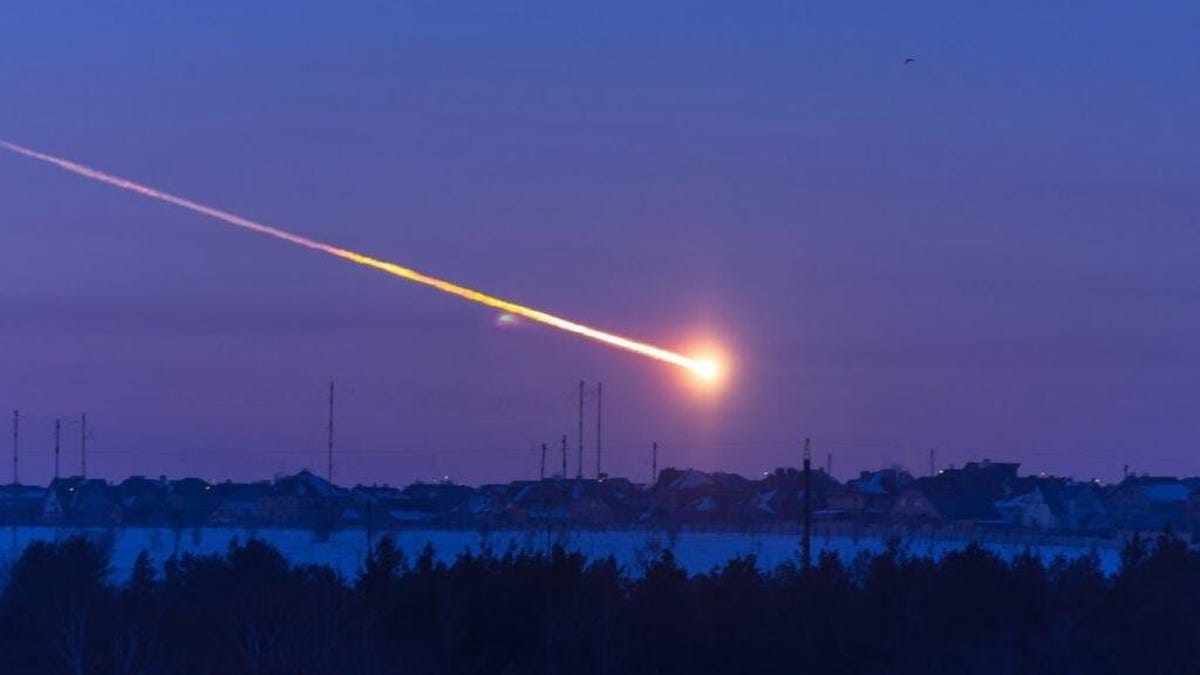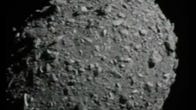
The fireball was caught by numerous Russian residents on camera in 2013.
CNET screenshot/Tuvix72/YouTube
Almost every day, some hunk of space rock impacts the Earth and burns up as a bright fireball in the sky. And, there’s probably far more of these minor impacts that go unreported over the majority of the planet that is unpopulated. What doesn’t happen on the daily is a cosmic impact like the one that literally rocked Russia on Feb. 15, 2013.
Dashboard cameras and smartphone videos in and around the city of Chelyabinsk captured a huge daytime fireball streaking across the sky, accompanied by a tremendous shockwave that shattered windows around the city of over a million residents. Damage was done to hundreds of buildings and numerous injuries were reported but fortunately none were fatal.
The scary scenes have a war-time vibe, but the cause was most definitely non-military. A large meteoroid, also referred to as a bolide, exploded as it ripped across the sky shortly after entering the atmosphere at almost 60 times the speed of sound.
The explosion that sent shockwaves toward the surface had a force nearly equal to 30 times that of the first atomic bomb test and actually happened in the upper atmosphere, around three times the typical cruising altitude of a commercial jet.
The presumed largest fragment of the super bolide to make it to the surface punched a 20-foot (six meter) wide hole in the icy surface of nearby Lake Cherbakul and promptly sank. The three-quarter ton meteorite was recovered from the bottom and now resides at the State History Museum of South Ural in Chelyabinsk.
A frozen lake is arguably the safest possible place for a meteoroid to impact the surface of the planet, besides the ocean, as no damage was reported from it hitting the surface. Its collision with the atmosphere was another matter.
More Cosmic Concerns
- Watch Asteroid Turn Into a Fireball Just Hours After Being Spotted
- Common Type of Asteroid Could Be Very Hard to Destroy, Study Finds
- Sun Unleashes Intense X-Class Solar Flare, With More Blasts Expected
The dryer-size hunk now sitting in the museum was whittled down by friction from an asteroid at least 65 feet (20 meters) across and thought to weigh around 12,000 tons at the time it impacted the atmosphere.
The only event in modern times that really compares with the Chelyabinsk impact is the so-called Tunguska event in 1908, when another piece of an asteroid or comet is thought to have exploded over Siberia. The resulting airburst flattened over 80 million trees and may have played a role in three deaths.
A review of eyewitness accounts from the Tunguska event was published in 2019 by researchers who also studied the Chelyabinsk impact. They determined that reports of shattered glass occurred over an area four to five times wider in the case of Tunguska compared with Chelyabinsk. The more extensive damage in the earlier case has little to do with the size of the object, which was comparable, but is related instead to the steeper angle that the Tunguska bolide took as it entered the atmosphere.
A 2014 analysis published in Physics Today concluded “the damage [in Chelyabinsk] could have been far worse.”
Better Eyes on the Sky
Since 2013, significant progress has been made in spotting and tracking near-Earth objects that could present some risk of impact. NASA and other space agencies are constantly cataloging and tracking thousands of asteroids.
The advances made in this effort were on display this week when astronomers spotted a tiny refrigerator-size asteroid just hours before impacting the atmosphere. Other observations were quickly made and scientists were able to accurately predict the time and place the meteor would become a widely witnessed fireball over Europe.
This ability is due in large part to new sky surveys and observatories like MEERKAT in South Africa and ATLAS in Hawaii that have come online in the past decade. Even more impressive, NASA’s DART mission managed to successfully alter the direction of an asteroid in space last year, striking a major blow for the cause of planetary protection going forward.


Watch this:
See NASA’s DART Probe Make Impact With Asteroid Dimorphos
3:22
But there remain numerous objects yet to be discovered that could blind-side us the way the Chelyabinsk bolide did. In particular, we have a literal blind spot when it comes to objects approaching us from the direction of the sun. NASA’s NEO Surveyor mission could help address this later in the decade.
Chelyabinsk also gave us new reasons for concern. Research published later in 2013 suggested the super bolide over Russia may have been a fragment that broke away from a larger asteroid. This serves as a reminder that determining and tracking the orbits of all asteroids approaching or near Earth may never be enough if an unpredicted fragment could be loosed and sent our direction at any time.
Another troubling paper was published at the time finding that we should expect such impacts to happen more frequently than once a century, perhaps as often as every couple decades.
No known asteroid or other object currently poses any threat of impact, but it’s still worth keeping as many eyes on the sky — and space — as possible.
